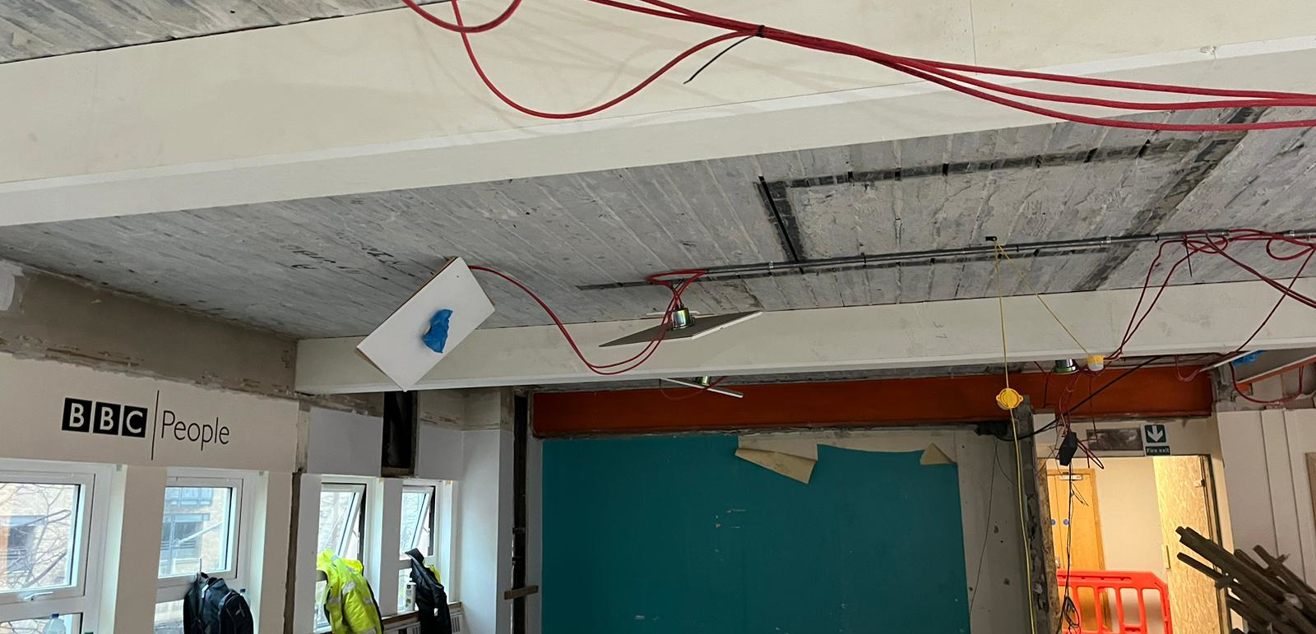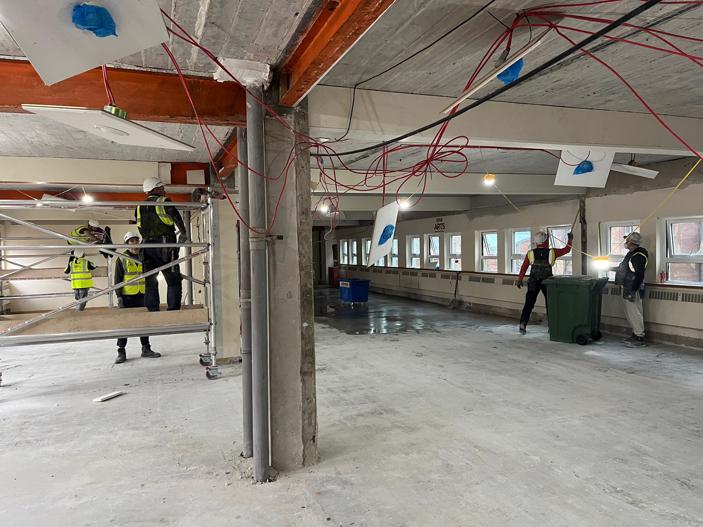22/03/2024

Steel encasement is a Passive Fire Protection (PFP) measure built into the structure of a building. Its purpose is to protect the main structural components of a building from collapse or damage in the event of a fire. By protecting key structural elements, steel encasement can prevent building collapse and save lives.
Steelwork is commonly used in multi-storey buildings to frame and support the structure. By encasing steel columns, joists, and beams, PFP installers are protecting the building from collapse, and the inhabitants from disaster.
In this guide to steel encasement, Crossfire explain what it is, how it works, and materials used. Check out our services to find out how Crossfire can help protect your building in the event of a fire.
What is Steel Encasement?
Steel encasement is a fire protection measure for structural steelwork within buildings. The PFP materials insulate steel elements, protecting them from the high temperature generated by fire. This in turn prevents damage to the steel components, or worse – collapse. Steel has its loadbearing capabilities compromised at high temperatures, around 550°C, commonly reached during a fire.
Many PFP measures work to limit the spread of fire and smoke, such as fire doors or cavity barriers, giving occupants time to escape and reducing the spread of damage. Steel encasement measures, on the other hand, work to prevent the structural damage of a building by protecting loadbearing steelwork. Both objectives ultimately save lives and prevent costly remedial works for buildings.

How does steel encasements work?
Fire resistance boards surround structural steelwork to block flames and smoke for an extended amount of time – from 30 to 180 minutes. Boards can surround steel columns, beams, and joists for comprehensive protection of a building’s integrity. Steel encasement boards are available in a range of thicknesses and with various lining options to offer the required level of fire protection.
Boards are popular in commercial buildings and spaces where they are visible as they have a clean, boxed look. This means steel columns, beams, and joists are completely covered and therefore less intrusive on the look of interior spaces.
Steel Encasement Standards
According to Building Regulations, all steelwork within a building in the must have PFP measures in place to prolong fire resistance and maintain building integrity for a reasonable period. The duration and extent of the fire protection measures depend on a range of qualities such as:
Fire resistance of materials used for steel encasement is measured according to fire tests outlined in BS 476-21: the fire tests performed on building materials and structures in order to determine the fire resistance of loadbearing elements of construction. BS EN 1363 establishes the general requirements for determining fire resistance of elements of construction and is also applicable to steel encasement materials.
Board Encasements vs Intumescent Coatings
|
Aspect |
Intumescent Coatings | Board Steel Encasement |
|---|---|---|
| Fire Protection Mechanism | Expands when exposed to fire, forming a thick insulating layer to protect the underlying substrate. | Provides a passive barrier against fire by covering the structural steel, preventing direct exposure to flames and high temperatures. |
| Thickness Requirement | Generally thinner application, typically ranging from 0.5mm to several millimeters. | Thickness varies but generally thicker compared to intumescent coatings, typically several centimeters. |
| Aesthetic Appearance | Can be applied to maintain the aesthetic appearance of structural elements, as it can be coated with paint to match surrounding surfaces. | Can add bulk to structural elements, potentially altering the appearance. Requires additional finishing for aesthetic purposes. |
| Application Method | Applied as a spray or paint directly onto the surface of the substrate. | Installed as prefabricated boards or wraps, requiring cutting and fitting around structural elements. |
| Installation Flexibility | Flexible application method suitable for complex shapes and areas with limited access. | Requires more extensive planning and may be less adaptable to irregular shapes or confined spaces. |
| Maintenance | May require periodic inspection and maintenance to ensure integrity and effectiveness. | Generally low maintenance once installed, but may require inspection for damage or deterioration over time. |
| Insulation Properties | Does not inherit a insulation rating (E) and therefore may require to be encased if the steel is in the line of a fire rated wall. | Provides an insulation (E) Rating. |
| Durability | Durability can vary depending on the quality of the coating and environmental conditions. | Generally durable, but may degrade over time due to environmental factors or physical damage. |
If you require any board encasements, please do not hesitate to contact our team.
Published on the 22/03/2024.
The Yard
100 Glen Road
Maghera
BT46 5JG
24A Baggot Street Upper
Dublin
D04 N528
